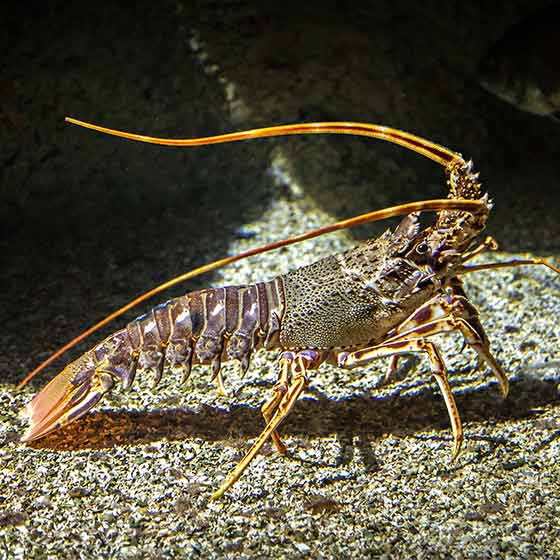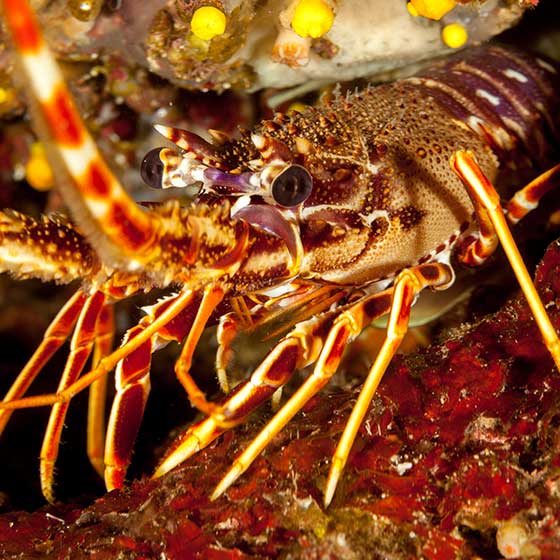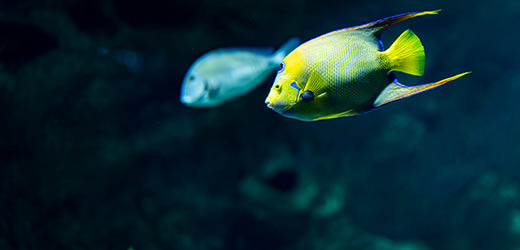Biology
Spiny lobsters tend to be gregarious (living in groups) and sedentary.
In fact, they only move about a little in order to feed, change homes or mate. Their activity is mainly nocturnal.
Their diet comprises echinoderms (sea stars, sea urchins, etc.) and molluscs whose shells they crush with their powerful mandibles. They may sometimes eat algae, worms and other crustaceans.




